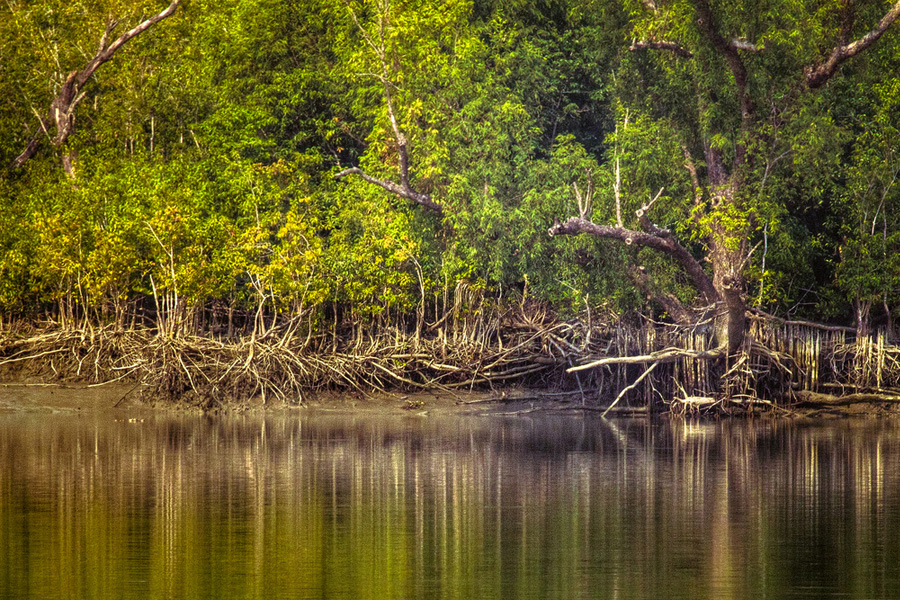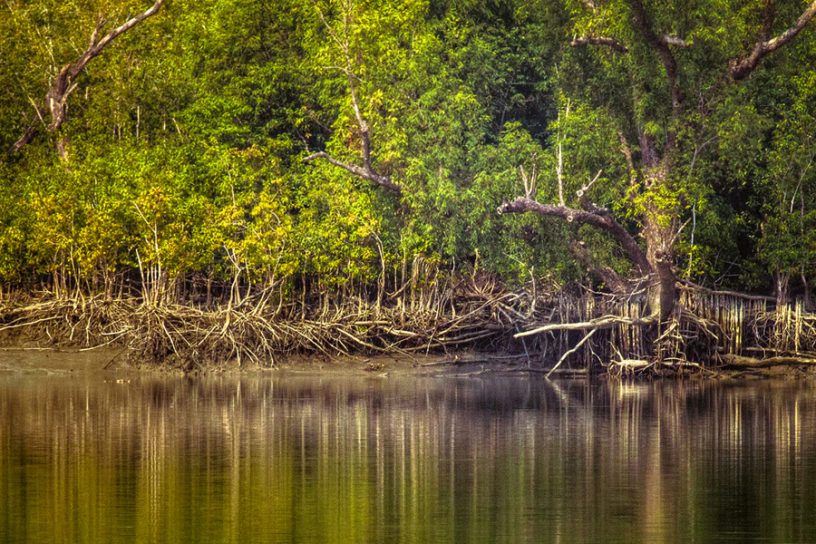
The species diversity was not found to be related with the distance from the nearby conserved mangrove forest, contrary to the island biogeography theory.
Authors
Abhiroop Chowdhury, Professor, Jindal School of Environment & Sustainability, O.P. Jindal Global University, Sonipat, Haryana; Ecological Restoration Laboratory, Department of Environmental Science & Engineering, Indian Institute of Technology (ISM), Dhanbad 826004, Jharkhand, India.
Aliya Naz, Assistant Professor, Jindal School of Liberal Arts and Humanities, O.P. Jindal Global University, Sonipat, Haryana, India.
Subodh Kumar Maiti, Ecological Restoration Laboratory, Department of Environmental Science & Engineering, Indian Institute of Technology (ISM), Dhanbad 826004, Jharkhand, India
Summary
Sundarban is the world’s largest mangrove wetland. This study, conducted in 2016, to compare blue carbon sequestration with different natural metapopulations and a four-year-old Avicennia marina (30% area)-Rhizophora mucronata (70% area)-mixed mangrove plantation under anthropoganic stress. The aims of the study is to find out the variations in soil ecological function indicators (pH, electrical conductivity, bulk density, soil texture, available nitrogn, phosphorus and soil organic carbon) and key ecological service indicator (soil blue carbon pool) between sites.
Simpson’s Index of dominance, diversity and Shannon-Weiner Index revealed that all the sites are under ecological stress, with the Suaeda maritima-dominated mudflat having the least biodiversity. It is also revealed that pH and electrical conductivity were highest in Suaeda maritima and Phoenix padulosa-dominated metapopulations, whereas organic carbon was the highest under the mangrove plantation and Avicennia marina-dominated site.
Available nitrogen was recorded highest in the community with the Sonneretia sp.-Avicennia marina association. The mixed mangrove plantation had the highest blue carbon pool. The species diversity was not found to be related with the distance from the nearby conserved mangrove forest, contrary to the island biogeography theory. This study concludes with a recommendation of mixed mangrove plantations to restore the degraded saline mudflats along the human settlements across the globe.
Published in: Marine Carbon Systems: Dynamics, Conservation, and Management
To read the full article, please click here.


